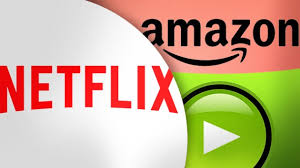
Breaking News
 The "Magical Winter" Lie We All Believe
The "Magical Winter" Lie We All Believe
 Perfect Aircrete, Kitchen Ingredients.
Perfect Aircrete, Kitchen Ingredients.
 Todays Pysops, Not Like Yesterdays Pysops
Todays Pysops, Not Like Yesterdays Pysops
 CIA is Broken… Can it Be Fixed?
CIA is Broken… Can it Be Fixed?
Top Tech News
 This tiny dev board is packed with features for ambitious makers
This tiny dev board is packed with features for ambitious makers
 Scientists Discover Gel to Regrow Tooth Enamel
Scientists Discover Gel to Regrow Tooth Enamel
 Vitamin C and Dandelion Root Killing Cancer Cells -- as Former CDC Director Calls for COVID-19...
Vitamin C and Dandelion Root Killing Cancer Cells -- as Former CDC Director Calls for COVID-19...
 Galactic Brain: US firm plans space-based data centers, power grid to challenge China
Galactic Brain: US firm plans space-based data centers, power grid to challenge China
 A microbial cleanup for glyphosate just earned a patent. Here's why that matters
A microbial cleanup for glyphosate just earned a patent. Here's why that matters
 Japan Breaks Internet Speed Record with 5 Million Times Faster Data Transfer
Japan Breaks Internet Speed Record with 5 Million Times Faster Data Transfer
 Advanced Propulsion Resources Part 1 of 2
Advanced Propulsion Resources Part 1 of 2
 PulsarFusion a forward-thinking UK aerospace company, is pushing the boundaries of space travel...
PulsarFusion a forward-thinking UK aerospace company, is pushing the boundaries of space travel...
 Dinky little laser box throws big-screen entertainment from inches away
Dinky little laser box throws big-screen entertainment from inches away
 'World's first' sodium-ion flashlight shines bright even at -40 ºF
'World's first' sodium-ion flashlight shines bright even at -40 ºF
Mossberg: Streaming TV is beginning to look a lot like cable

Streaming TV shows, movies, and other types of video over the internet to all manner of devices, once a fringe habit, is now a squarely mainstream practice. Even people still paying for cable or satellite service often also have Netflix or Hulu accounts. Nearly every traditional TV network, sports league, or video service — even those still primarily grounded in cable or satellite — has a channel or app for playing video on everything from set-top boxes and "smart" TVs to mobile phones.
Until recently, however, almost all of these streaming apps and services followed what you might call the Netflix / Hulu model. You paid a fairly modest monthly fee for a large library of shows and movies which you could watch anytime, as many times as you wanted, in whatever order and frequency you wanted. You didn't need to record anything, because it was there, waiting in the cloud. Sometimes, you had to prove you had a cable subscription to enjoy this a la carte approach at no extra cost. Sometimes, there were commercials, sometimes not. But the basic idea still applied.



